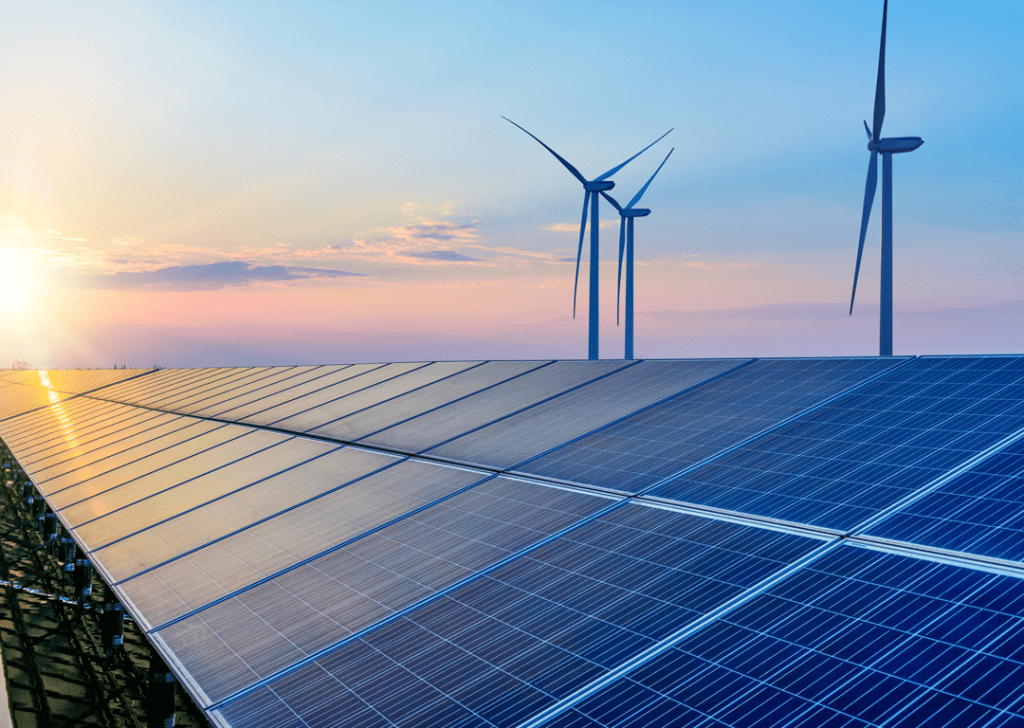Turning sunlight into electricity
Solar photovoltaic (PV) panels turn sunlight into electricity. In order to use this energy, the panels mounted on your roof need to be connected to an inverter using cables. Our package includes all the necessary equipment for a complete solar installation so, after installation, you will be able to automatically generate your own electricity from the panels installed.
During sunny days the solar panels will produce more electricity than you are able to use. Unused electricity is exported to the national grid, unless you have got a power diverter or battery installed, meaning you will store currently unused electricity for consumption at a later time. At other times you will use more energy than your solar panels generate. You will then use electricity from the national grid – just like you do now.
The industry standard for the lifespan of solar panels is 25-30 years. However, a solar panel won’t die after 25-30 years – rather, its power output will decrease a significant amount below what the manufacturer projected. It’s hard to understand the upfront cost of going solar without knowing how long you can expect your rooftop panels to produce ample energy. Ultimately, your solar panels will offset your electricity use for decades and significantly reduce your energy bills – but to get a sense of when you’ll need to replace your system, it’s important to understand industry projections and degradation rates.
more info
01. How quickly do solar panels degrade?
A 2012 study by the National Renewable Energy Laboratory (NREL) found that, on average, solar panel output falls by 0.8% each year. This rate of decline is called the solar panel degradation rate. Though this metric will vary depending on which panel brand you buy, premium manufacturers like SunPower offer degradation rates as low as 0.3%. Solar panel degradation rates are constantly improving as solar panel technology improves over the years, and degradation rates below 1% are now common throughout the industry. In the years since this 2012 study was conducted, more efficient technologies have been developed and many newer panels have just a 0.5% yearly decline in energy output (or better!).
So what does panel degradation rate mean exactly? For the above example, a 0.8% degradation rate means that in year two, your panels will operate at 99.2% of their original output; by the end of their 25-year “useful lifespan,” they will still be operating at 82.5%. A slightly more durable panel with a degradation rate of 0.5% will likely produce around 87.5% as much solar power as it did when it was first installed. To determine the projected output of your solar panels after a certain number of years, you can simply multiply the degradation rate by the number of years you are interested in and subtract that number from 100%.
02. Solar panel warranties: what to know
Solar panels also come with a few different warranties that can give you a sense of just how long you can expect your solar panel’s lifespan to be. Your manufacturer’s warranty will include both an equipment warranty, to certify against manufacturing defects, and a performance (aka power) warranty, to guarantee that your panels will produce a certain amount of electricity. It’s important to note that defects outside of the manufacturer’s control (for example, if damage is caused by downed tree branches) typically aren’t covered under warranty.
When it comes to understanding the anticipated degradation rate of your solar panels, you’ll want to look at the performance warranty. Typically, a performance warranty is a 25-year warranty and will guarantee that your solar panels maintain a certain percentage of their original output each year.
03. Can you make your solar panels last longer?
In general, solar panels are extremely durable. Most manufacturers test their panels to confirm that they can withstand high winds and heavy snow loads, and many solar panels are specifically tested to ensure that they can withstand falling hail. Additionally, solar energy systems don’t usually have moving parts, and they require little or no maintenance. Nevertheless, keeping your solar panel system well maintained can lead to a lower degradation rate each year and can promise longer panel performance. Here are a few actions you can take to make your solar panels last longer:
04. Solar Checks
1. Choose a reputable installer and high quality equipment
Having a long-lasting solar energy system starts with your initial installation: the best way to keep your solar panels working long-term is to work with a reputable installer that offers solid customer service and a labor warranty. As discussed above, it’s also important to purchase high-quality solar panels that have robust warranties– to protect your solar investment, you’ll want to ensure that the manufacturer of your solar panels guarantees that they’ll be free of defects and perform well over a long period of time.
2. Have an installer regularly inspect your solar panels
To ensure your solar panels last a long time, make sure your installer or operations and maintenance (O&M) provider regularly examines your solar panel installation. Frequent maintenance checks can reveal potential issues like loose racking, exposed wires, and other areas of concern. It’s important to have a professional check up on your panels instead of doing it yourself because you can void your panel warranty if you end up scratching or otherwise damaging the panels on your roof.
An inspection of your solar panels may also include an inspection of the other equipment involved in a solar installation –namely your solar inverters and roof racking system. A typical central inverter for a photovoltaic (PV) installation will last between 10 and 15 years and thus will need to be replaced at some point during the lifetime of your solar panels. However, microinverters generally offer the same lifespan as their solar panel counterparts: 25 years. When it comes to racking, it’s always essential to make sure that your panels are securely mounted to your roof so they don’t become loose and move around or fall off entirely.
3. Protect your solar panels from damage
When you first install your solar panels, your installer will make sure that there are no large trees that could cast a shade or drop branches on your panels. As long as you can avoid physical damage to your solar panels, they will continue to produce energy for many years, possibly far beyond the 25 to 30 year “lifetime” of typical solar panels. You can even buy specialty products to prevent specific types of physical damage to your panels.

